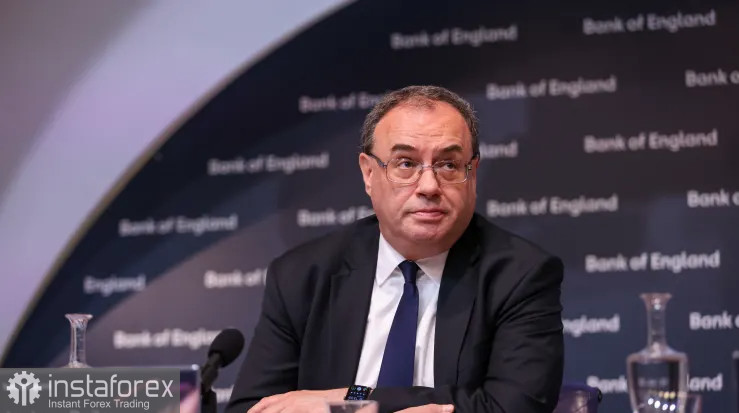The pound sterling collapsed after the disappointing forecasts. They reflect that the country is dealing with a number of problems caused by inflationary pressure. The regulator is still unable to rein in inflation. BoE voting members have also expressed different points of view on the key rate.
Today, the Bank of England hiked the key rate for the fifth time in a row to tame galloping inflation. However, traders were well aware of such an outcome. Yet, some analysts were betting on a more aggressive monetary tightening. The Monetary Policy Committee voted 6-3 to increase the key rate by 25 basis points to 1.25%, with the three dissenting members voting for a 50 basis point hike to 1.5%.

Policymakers led by BoE Governor Andrew Bailey hinted at a more aggressive monetary tightening if inflation continues to rise. They also stressed that they would be particularly alert to indications of more persistent inflationary pressures. All members agreed with this statement, abandoning the strategy they followed in May 2021. Back then, two members refused to make additional interest rate increases.
Yesterday, the Fed made a historic decision by hiking the key rate 0.75 basis points, the largest increase since 1994. After several weeks of discussion, the Federal Open Market Committee brought the interest rate to the range of 1.5-1.75%, the highest level since the start of the coronavirus pandemic in March 2020.
At its May meeting, the Bank of England also raised its benchmark rate by 25 basis points to 1%, the highest level in 13 years. The regulator warned that the UK economy may slide into a recession. The recession is one of the main reasons why the regulator does not act more aggressively and does not take similar hawkish steps to the Fed. Policymakers are afraid that the economy may shrink even more by the end of the year due to monetary tightening. Falling GDP has turned into one of the biggest problems after the coronavirus pandemic.
The latest UK inflation data unveiled that the indicator reached a 40-year high or 9% in annual terms. Such a surge occurred because of a sharp jump in food and energy prices. So, the country is facing a serious inflation crisis, which it is not possible to solve yet. The measures taken by Prime Minister Boris Johnson and Chancellor of the Exchequer Rishi Sunak have not brought desirable results. The debt burden accumulating during the period of interest rate increases and high debt servicing costs may lead to devastating consequences. Currently, the BoE expects inflation to exceed 11% at the end of this year.
As for the pace of economic growth, GDP dwindled by 0.3% in April this year after a 0.1% decline in March. This was the first consecutive drop in the economy since March 2020. The OECD forecasts the UK to stagnate next year, becoming the worst-performing economy in G7. This scenario looks likely due to higher interest rates, taxes, and a drop in trade balance, along with rising food and energy prices. Households will bear the brunt of the economic turmoil.
Following such downbeat forecasts, the pound sterling sank against the US dollar. If the bears push the price below 1.2030 today, then the pound sterling is likely to slide to 1.1990. If it dips below this level, it is sure to reach a low of 1.1940. A correction may start only after a breakout of 1.2190. If so, the price could rebound to 1.2240. However, the bulls will try really hard to push the pound sterling above this level. If it jumps above this level, it may grow to 1.2300 and 1.2350.
As for the prospects for the euro, its recent rally was short-lived as expected. The bulls will hardly keep the market under their control for a long time due to the Fed's key rate decision. It is better to be very careful when opening long positions at current levels. Bulls need to show energy at 1.0400. Otherwise, the pressure on the trading instrument will only escalate. If the euro dips below 1.0400, it will not be able to resume an upward movement. As a result, it will slip to 1.0360. A breakout of this support level could lead to a further decrease in the trading instrument. The euro may test 1.0310 and 1.0260. It is recommended to open long positions only if the price recovers to 1.0460. If so, the euro may rise to 1.0540 and 1.0585.





















